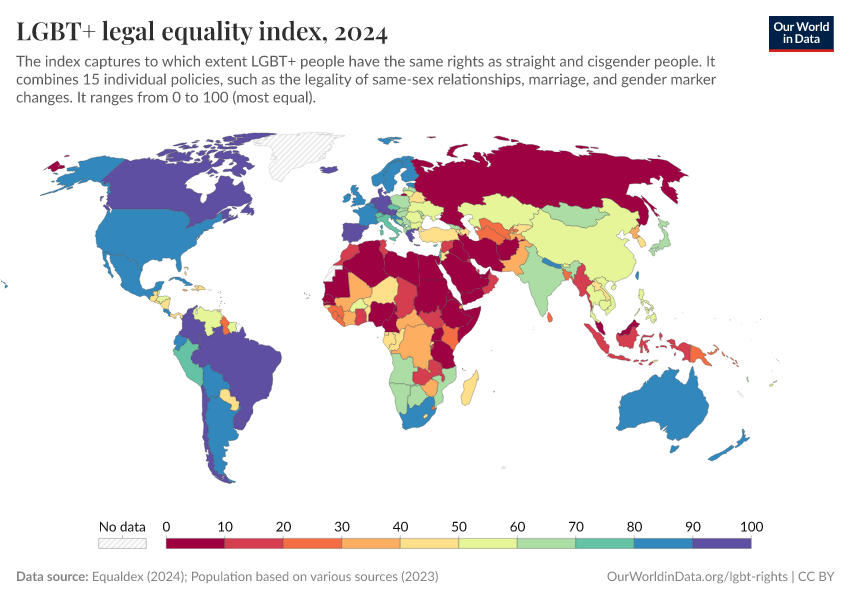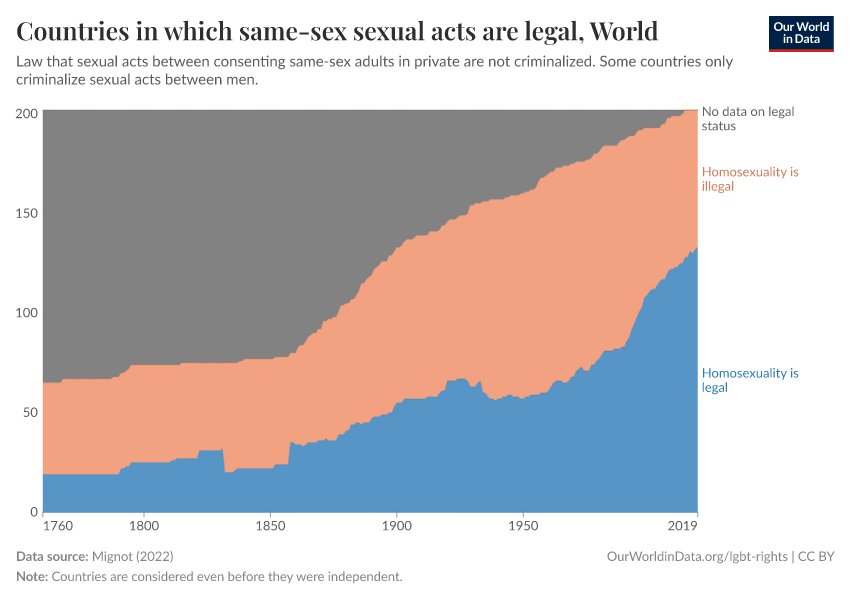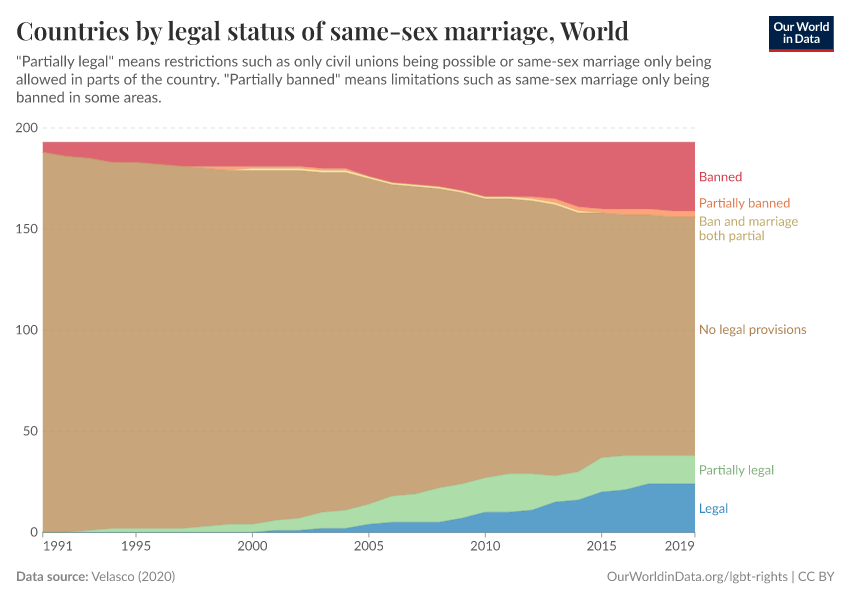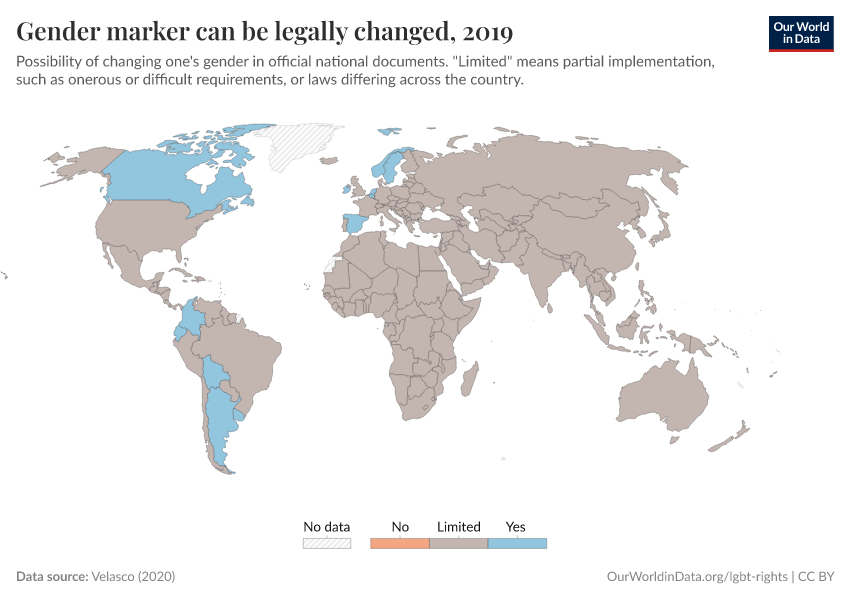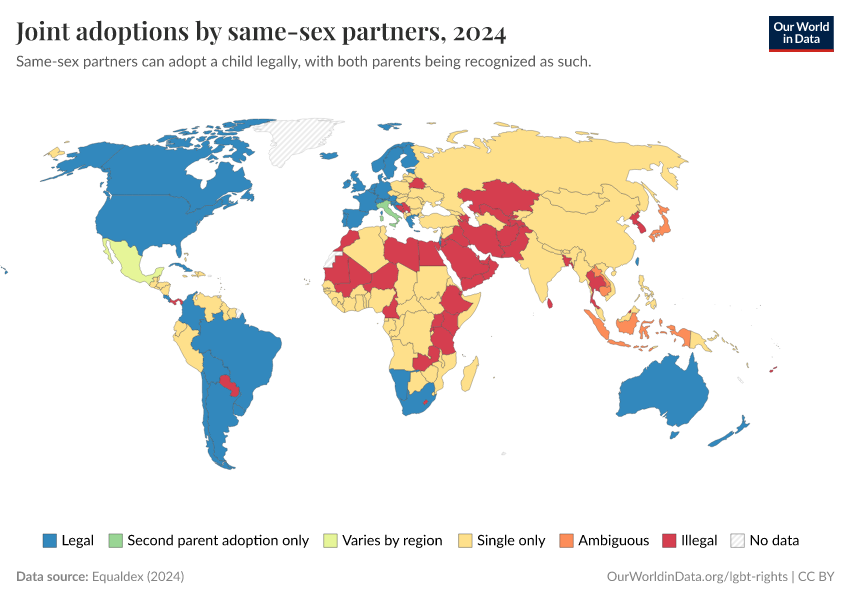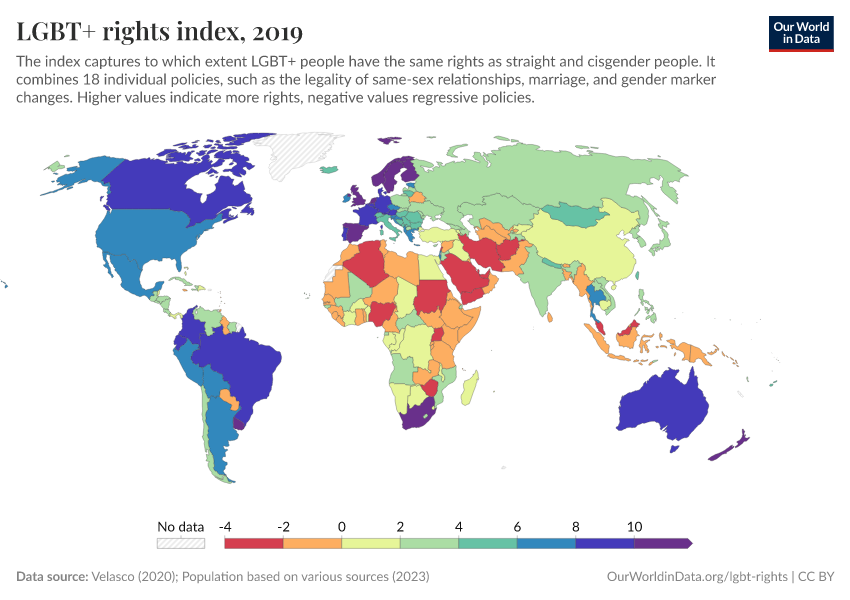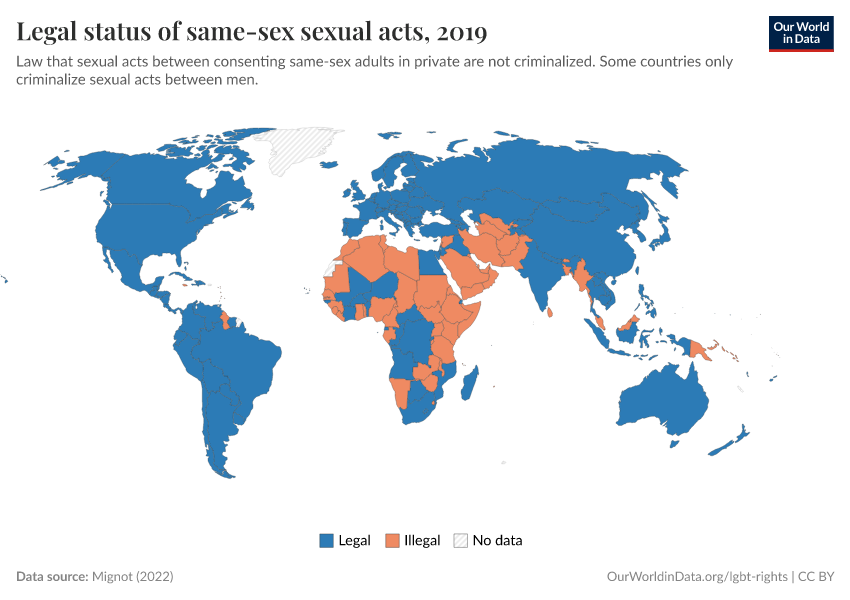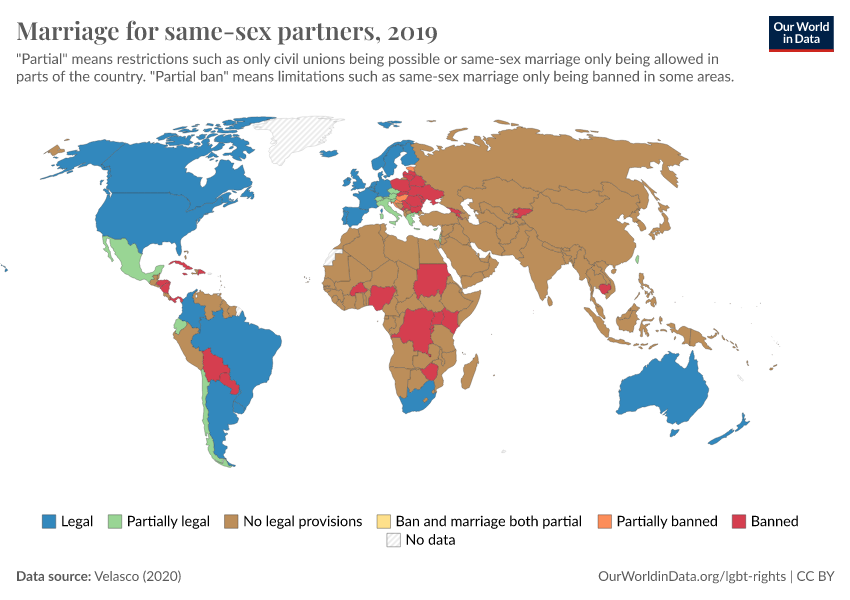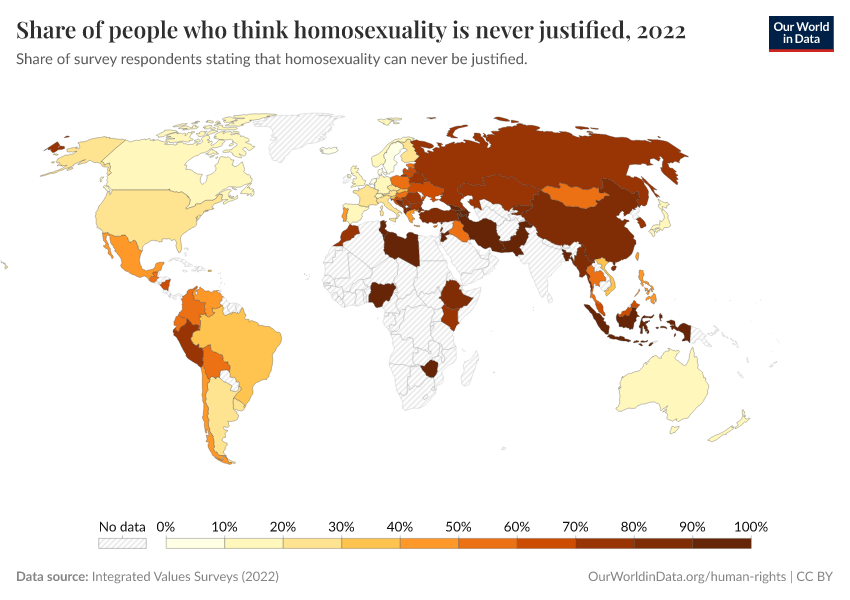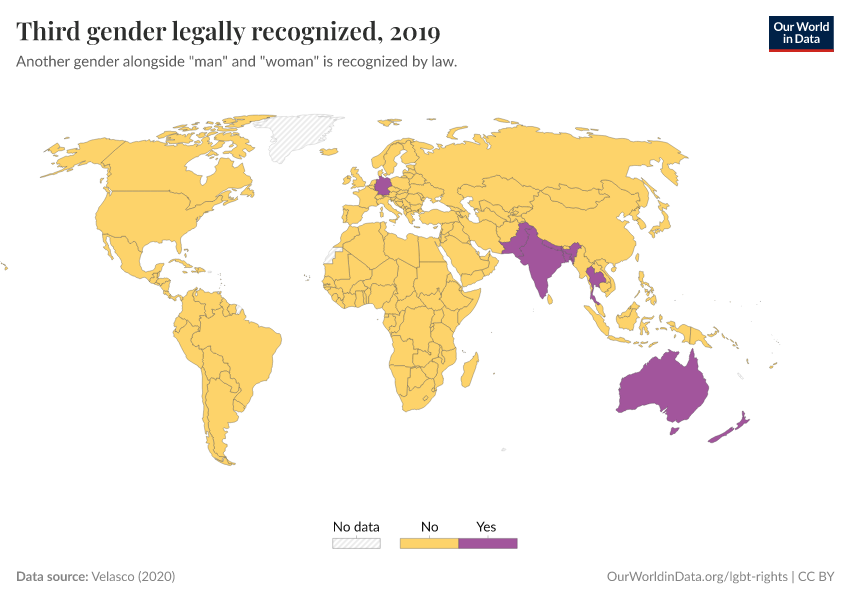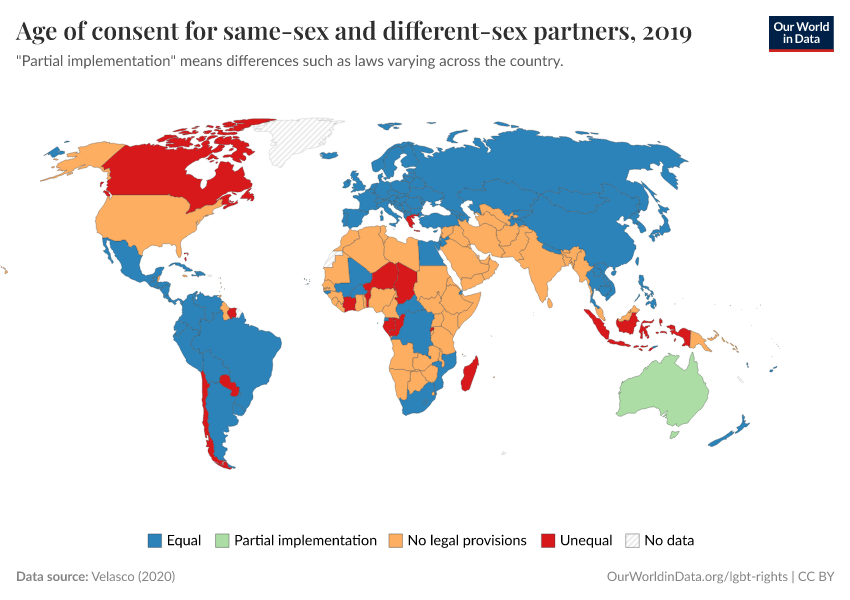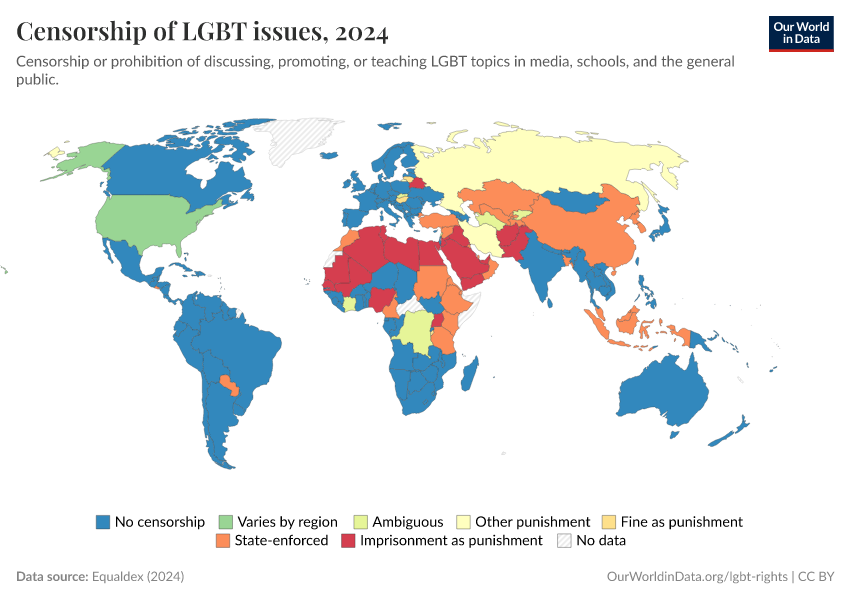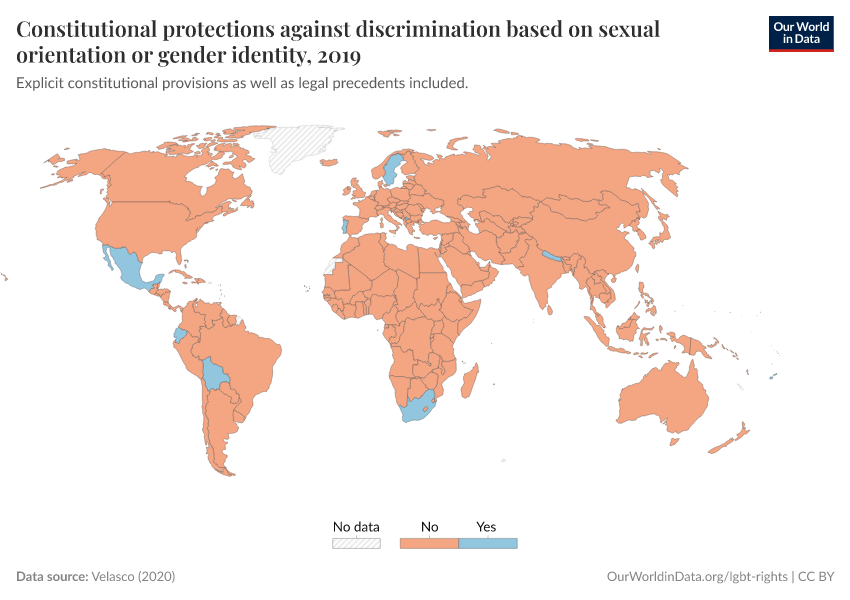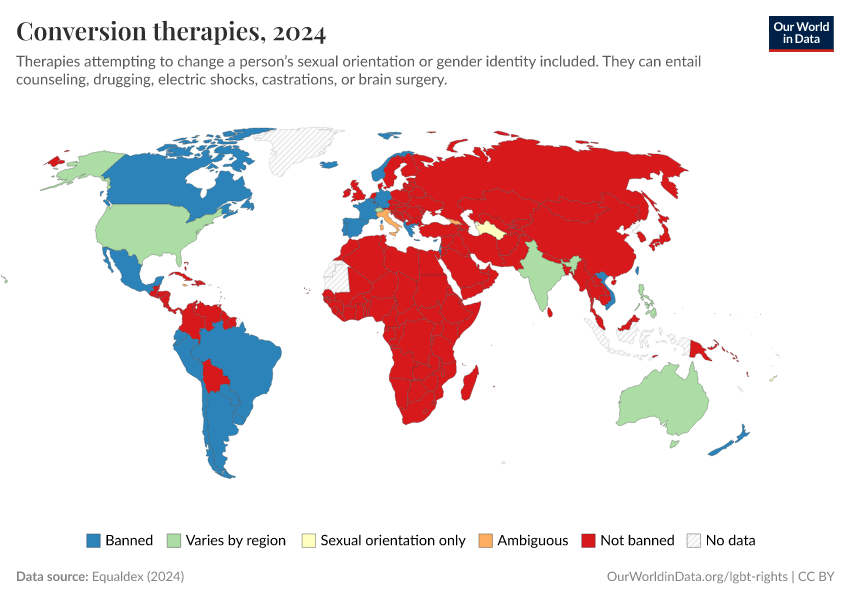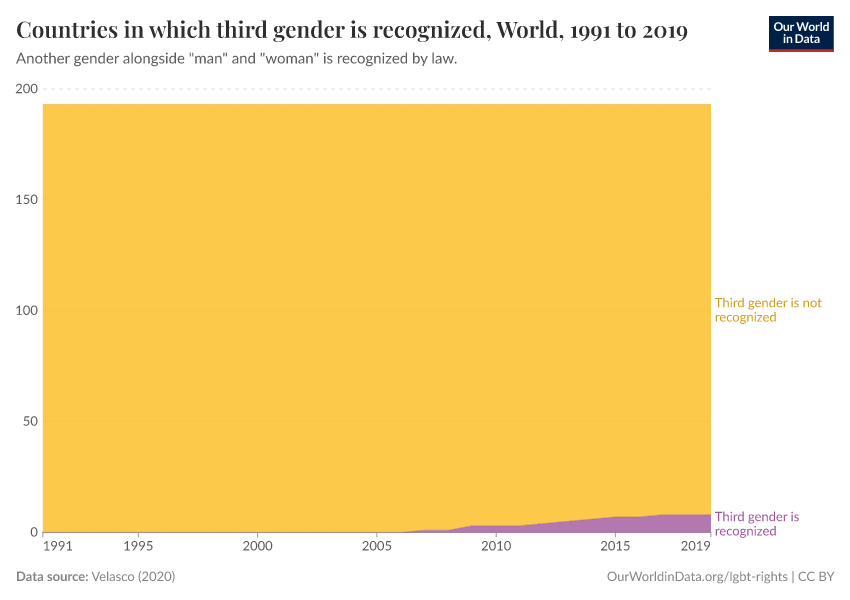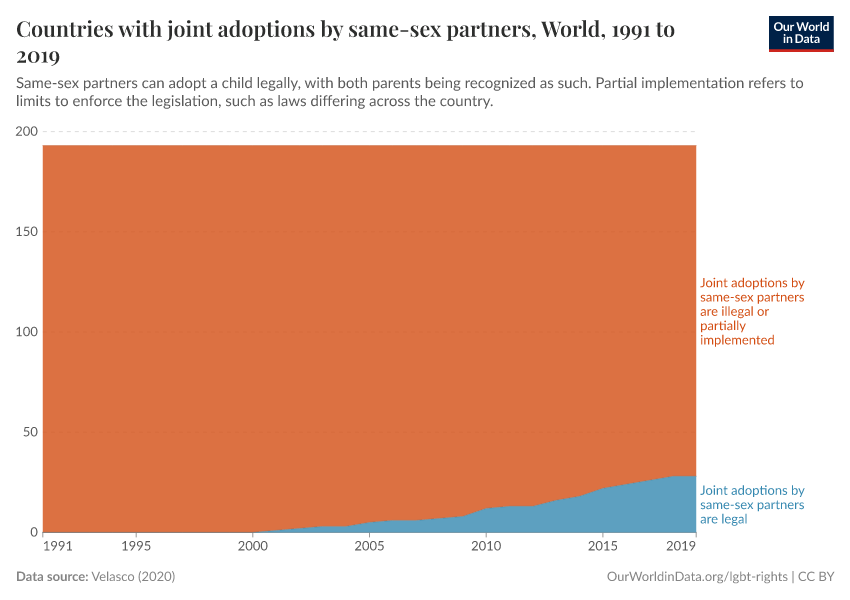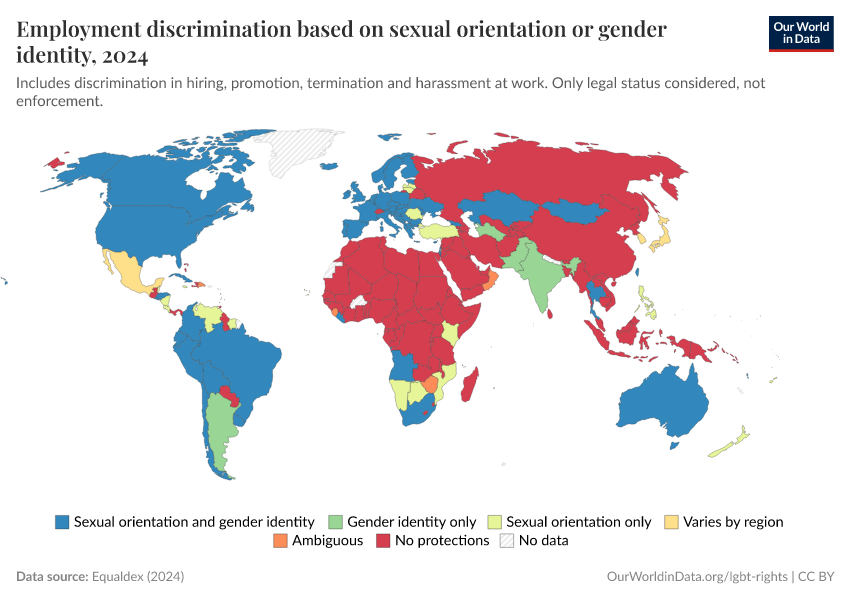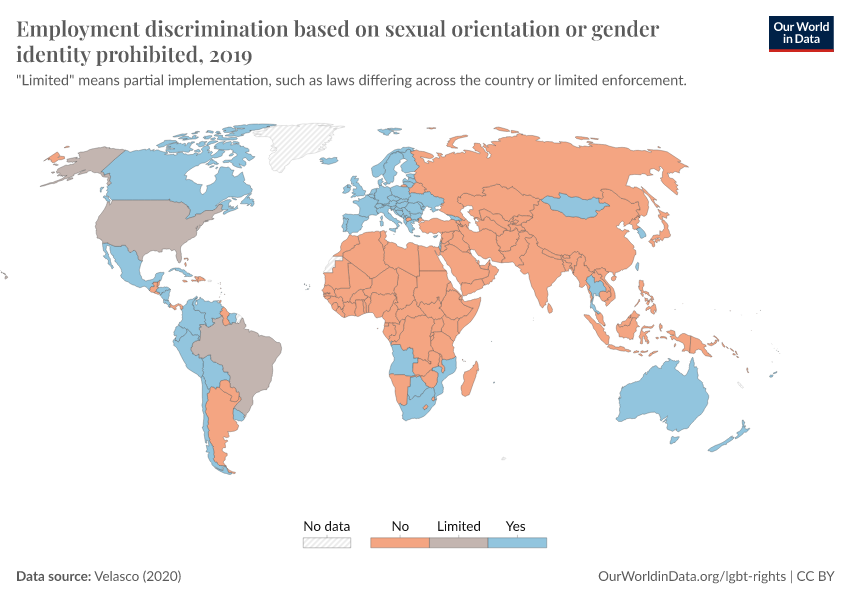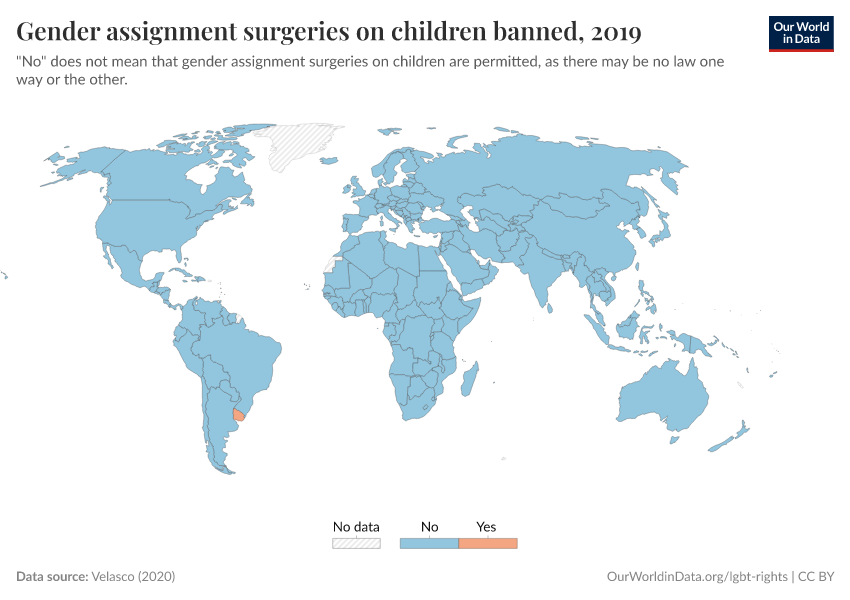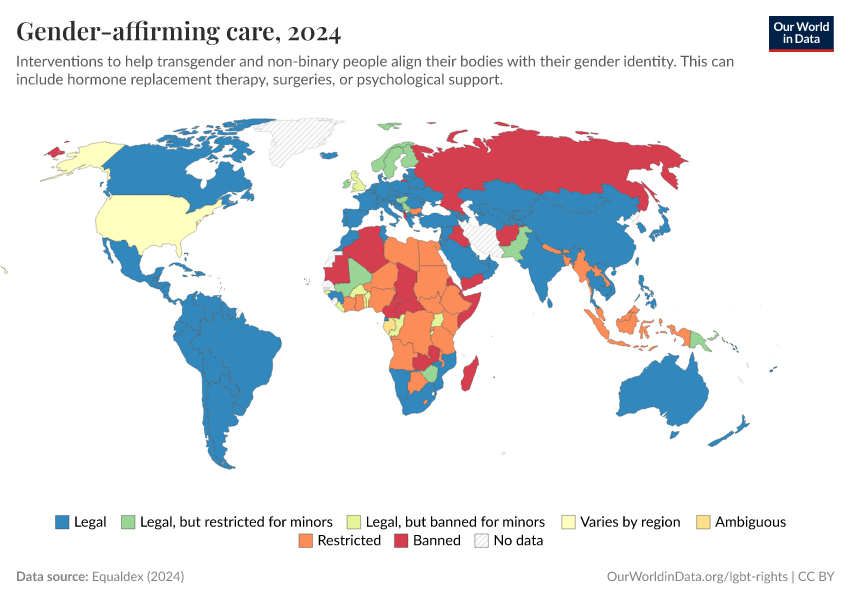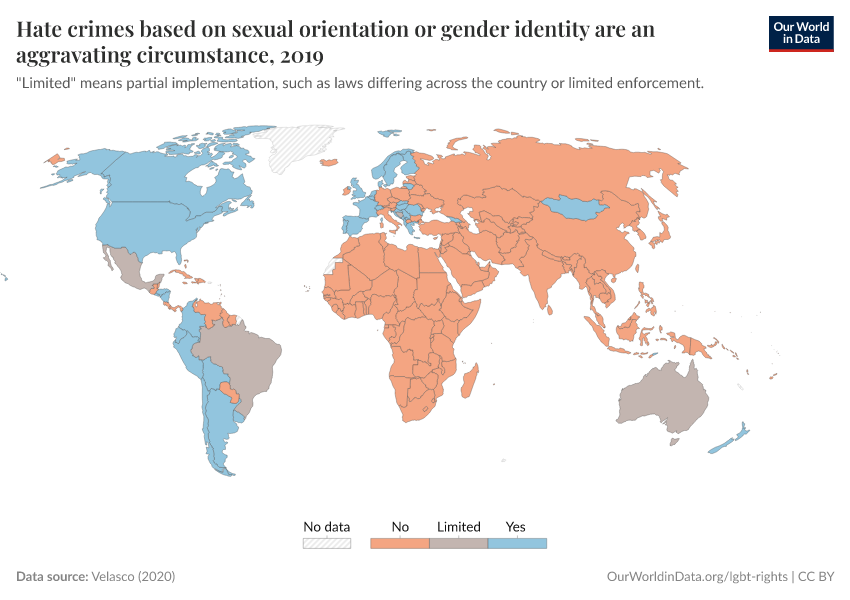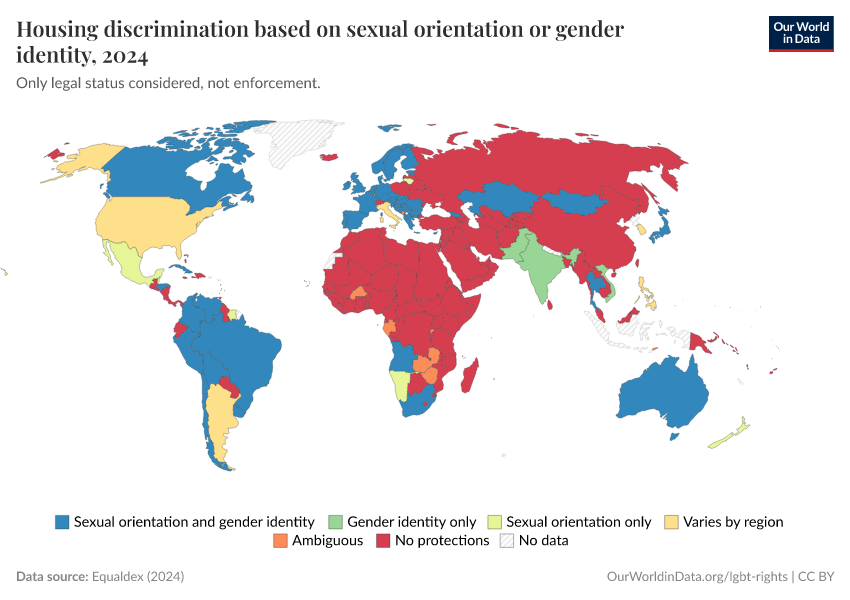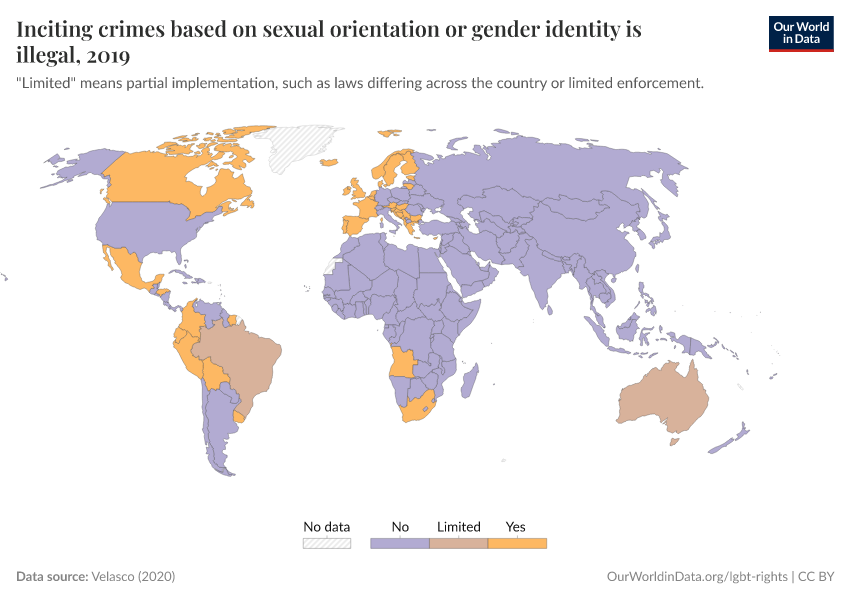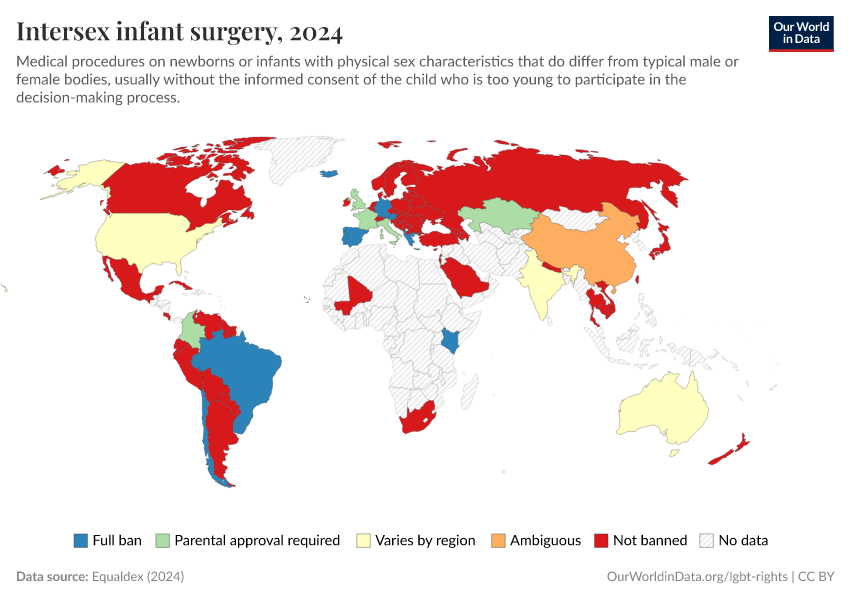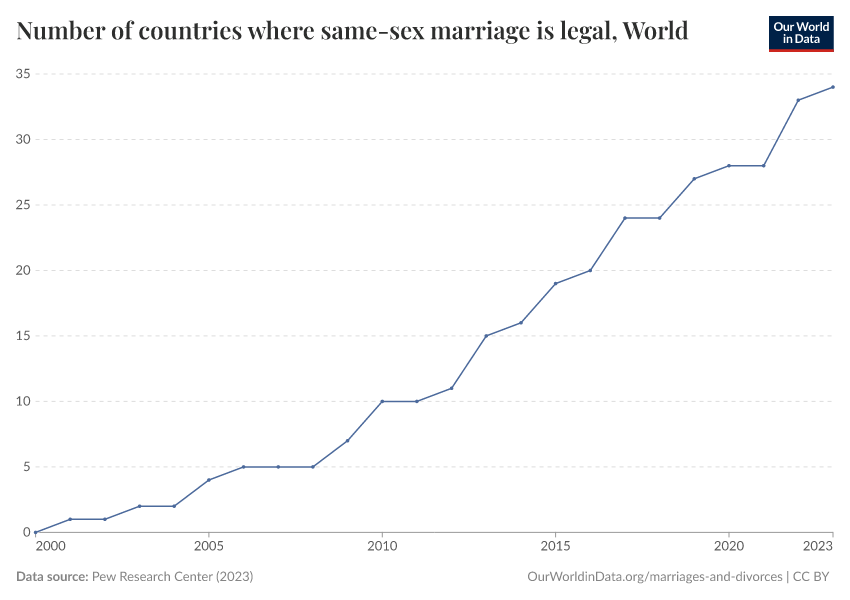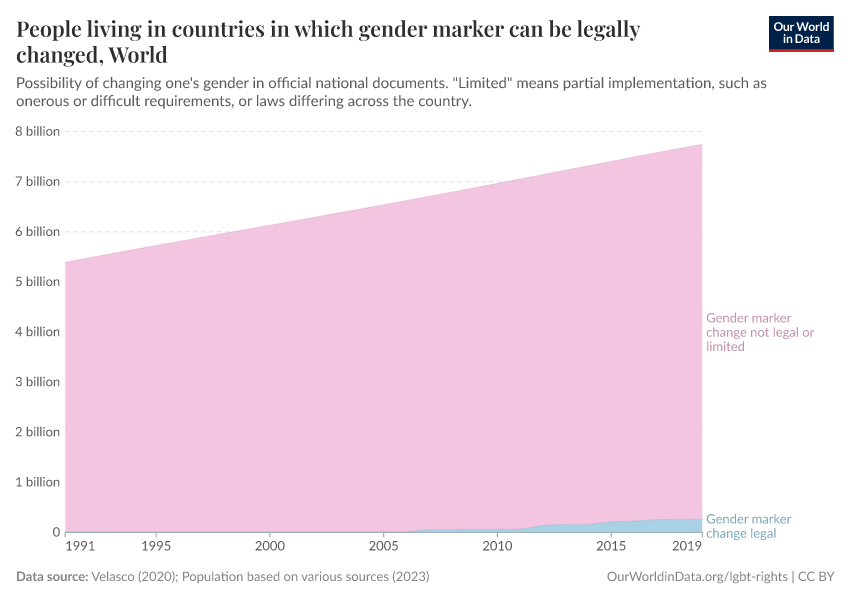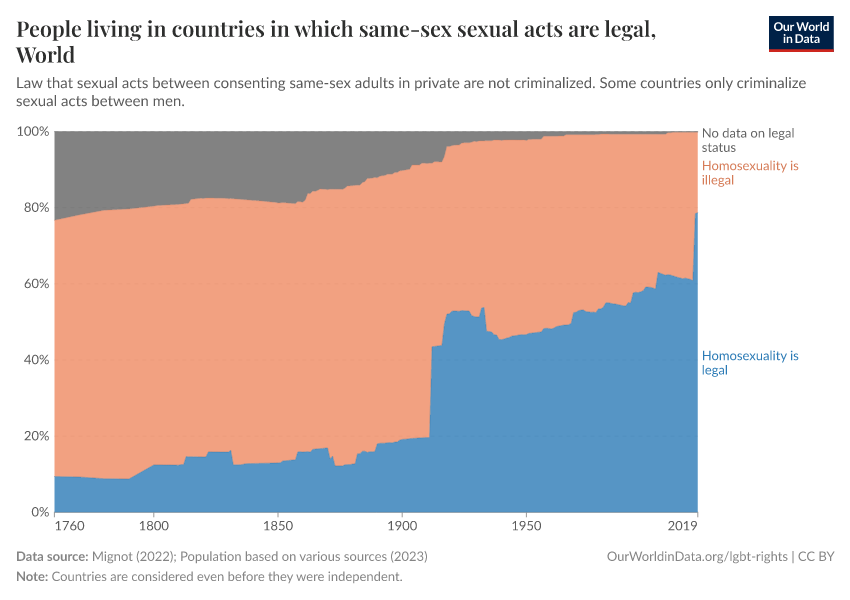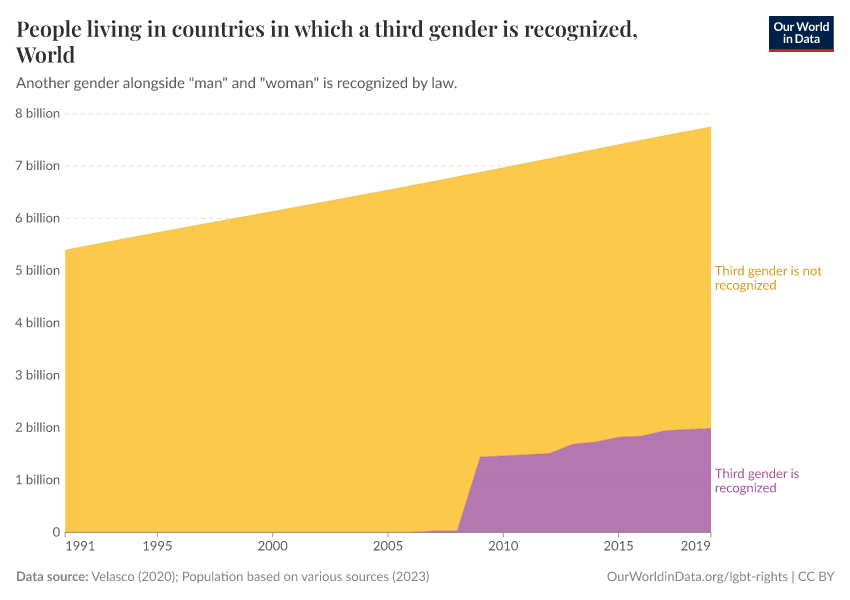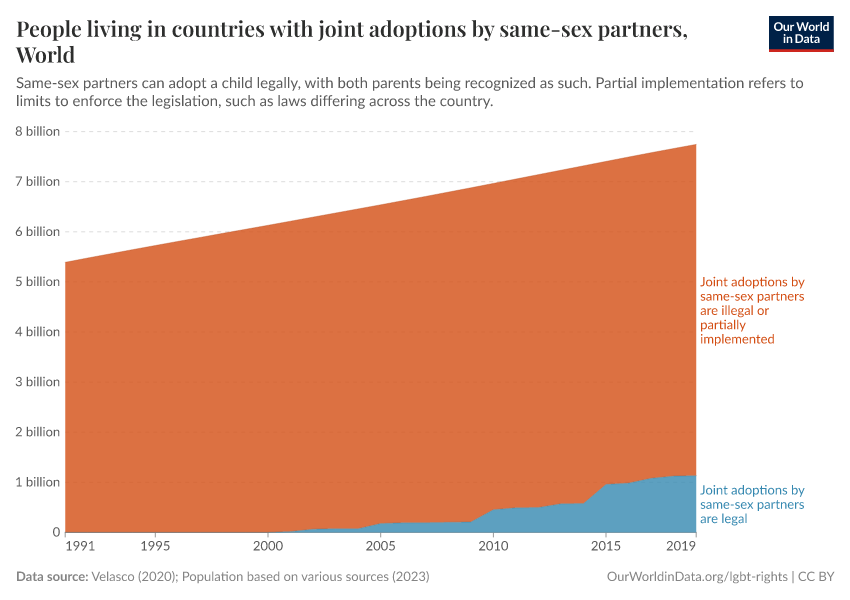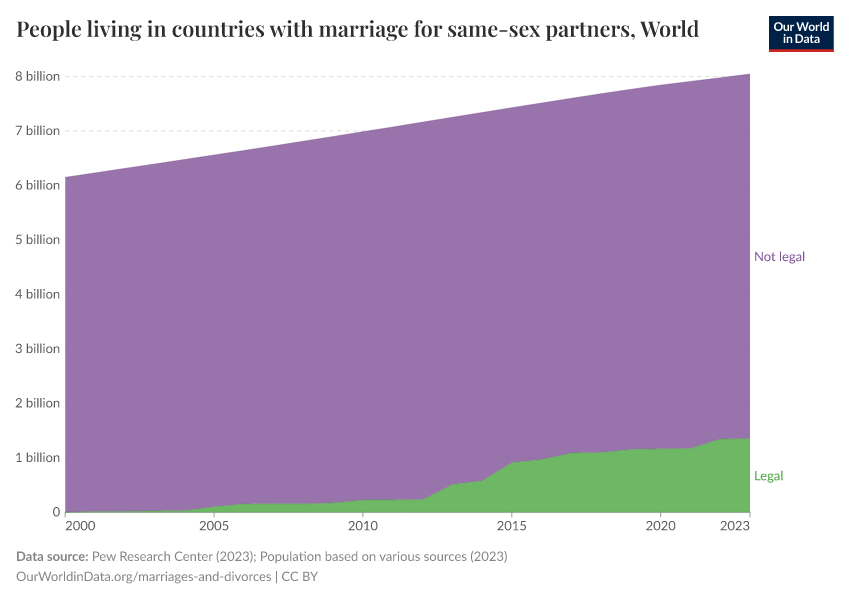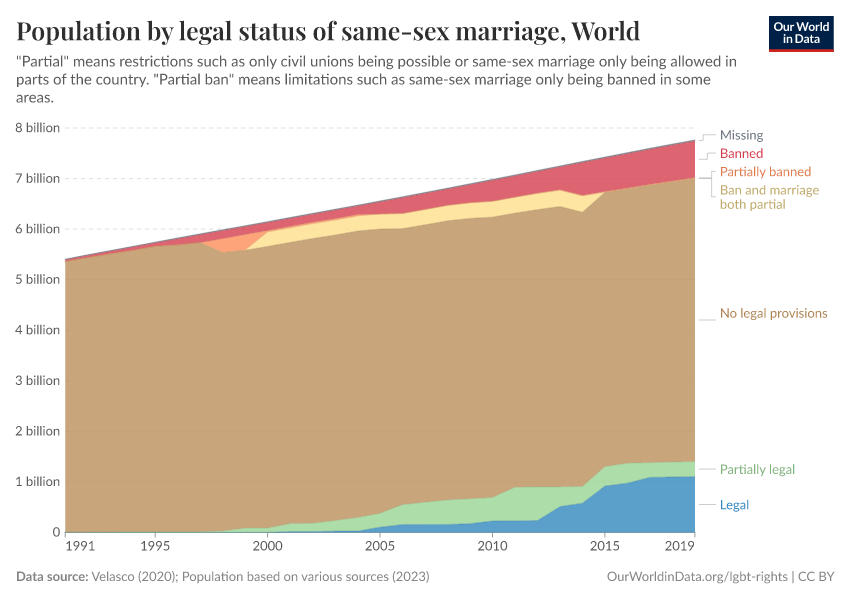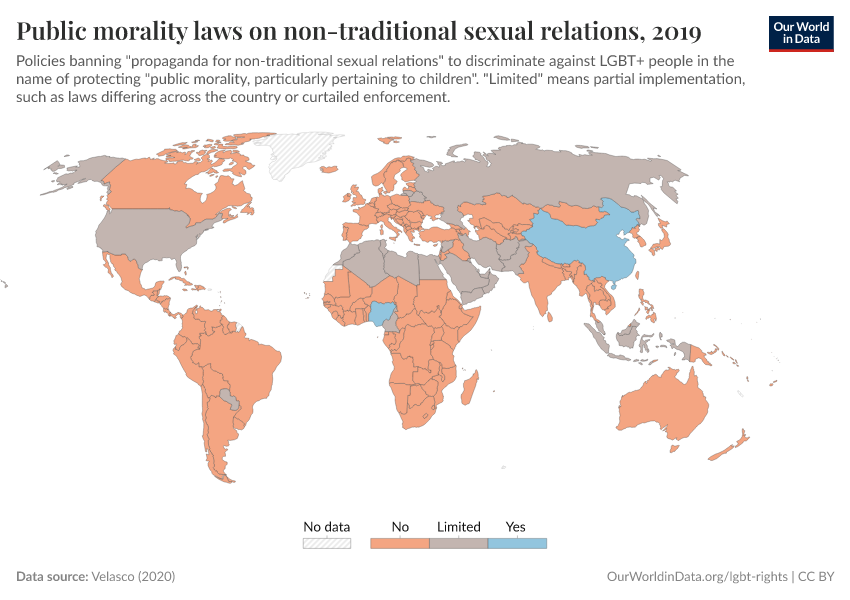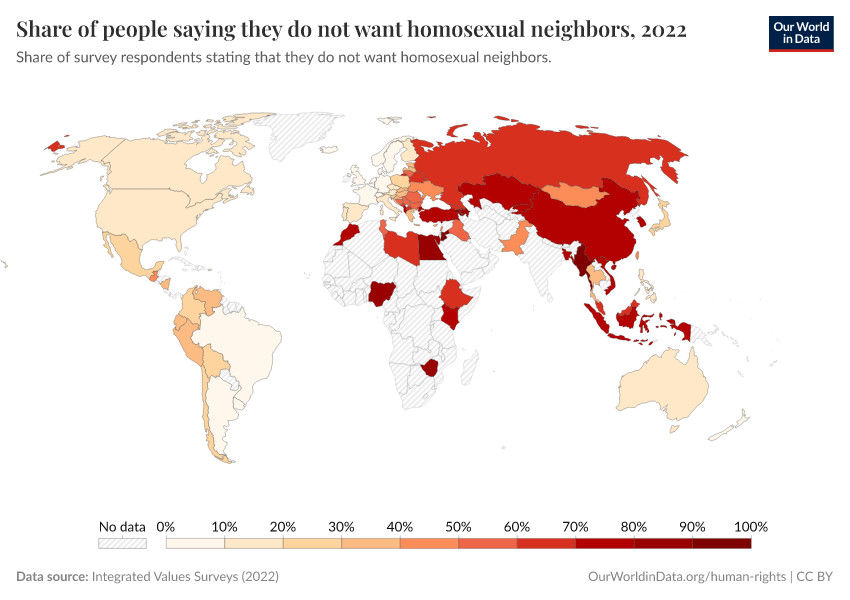LGBT+ Rights
LGBT+ rights are human rights that all lesbian, gay, bisexual, transgender and other people outside traditional sexuality and gender categories have. But in practice, these rights are often not protected to the same extent as the rights of straight and cisgender people.
Among others, LGBT+ rights include: physical integrity rights, such as not being executed for their sexuality or gender and not being subjected to conversion therapies; social rights, such as changing their legal gender, being sexually intimate, marrying, and adopting children with people of the same sex; economic rights such as not being discriminated at work; and political rights, such as being able to advocate for themselves and their communities publicly.
The protection of these rights allows LGBT+ people to live the lives they want and to thrive in them.
On this page, you can find data and visualizations on how the protection of LGBT+ rights has changed over time, and how it differs across countries.
Research & Writing
Key Charts on LGBT+ Rights
See all charts on this topicCite this work
Our articles and data visualizations rely on work from many different people and organizations. When citing this topic page, please also cite the underlying data sources. This topic page can be cited as:
Bastian Herre and Pablo Arriagada (2023) - “LGBT+ Rights” Published online at OurWorldinData.org. Retrieved from: 'https://ourworldindata.org/lgbt-rights' [Online Resource]BibTeX citation
@article{owid-lgbt-rights,
author = {Bastian Herre and Pablo Arriagada},
title = {LGBT+ Rights},
journal = {Our World in Data},
year = {2023},
note = {https://ourworldindata.org/lgbt-rights}
}Reuse this work freely
All visualizations, data, and code produced by Our World in Data are completely open access under the Creative Commons BY license. You have the permission to use, distribute, and reproduce these in any medium, provided the source and authors are credited.
The data produced by third parties and made available by Our World in Data is subject to the license terms from the original third-party authors. We will always indicate the original source of the data in our documentation, so you should always check the license of any such third-party data before use and redistribution.
All of our charts can be embedded in any site.
